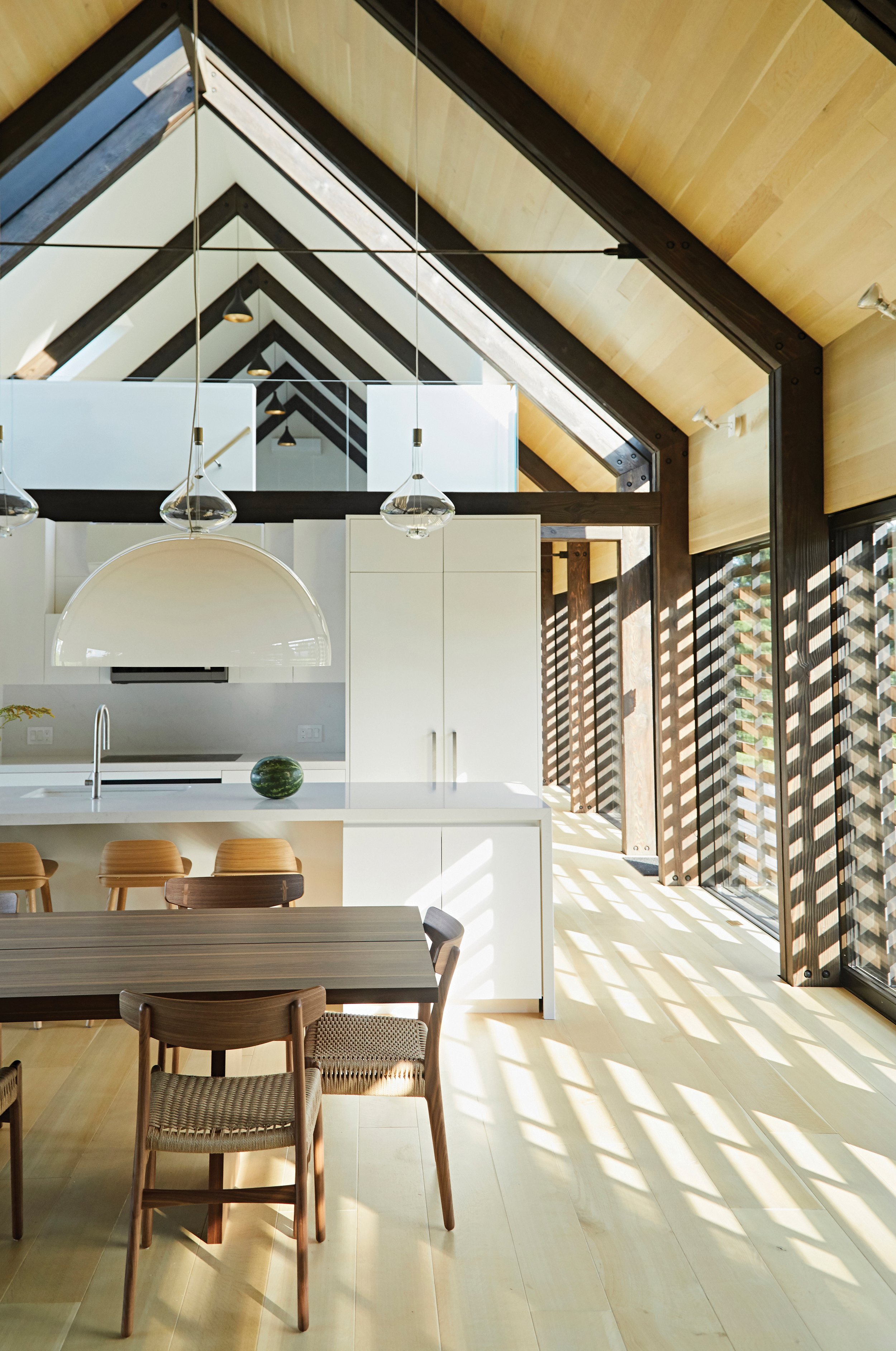What is Layered Lighting?
An expert reveals how to achieve the perfect layers of light for your interior spaces.
Lighting sets a mood for a room, allows us to extend our days, and even plays an important role in our circadian system health. In trying to determine the right kind of light for your space, you may hear references to using “layers of light.” What does layered lighting mean and how do you do it?
Robin Muto, lead designer and owner of Robin Muto Interiors, is an interior and lighting designer. She says that layered lighting is having different light sources that create different qualities of light.
Here are the players behind the layers:
Track lighting are little spotlights with different beam spreads. They range from creating an intense, bright narrow spot to a white flood that will appear as a large, illuminated area.
Table lamps provide direct, indirect, and ambient light whose qualities vary with the type of shade.
Cone-shaped lamps are little powerhouses whose only emanating light is that which comes out from below. Muto describes it as an intimate layer of light.
Wall sconces send light upward and outward or downward. These help a room avoid what Muto calls, “the museum effect,” when a room is filled with all recessed and downward lights.
Floor or wall lamps, like table lamps, help hit the ceiling with light.
When it comes to planning the lighting in your own space, Muto shares her advice.
You cannot have too much light.
Aim for variety. With a standard 9-foot ceiling you’re better off having eight various sources with each at 100 watts instead of four giant recessed lights of 250 watts. With no light bouncing off the ceiling a room can feel oppressive, even in a large, bright space.
Invest in table and floor lamps. Muto says that you don’t need to have a bunch of light fixtures. Instead, get table and floor lamps and move them around.
Get dimmers for your cords. These are an affordable and easy way to add diversity to a room’s light.
For more information, Muto recommends the American Lighting Association.




